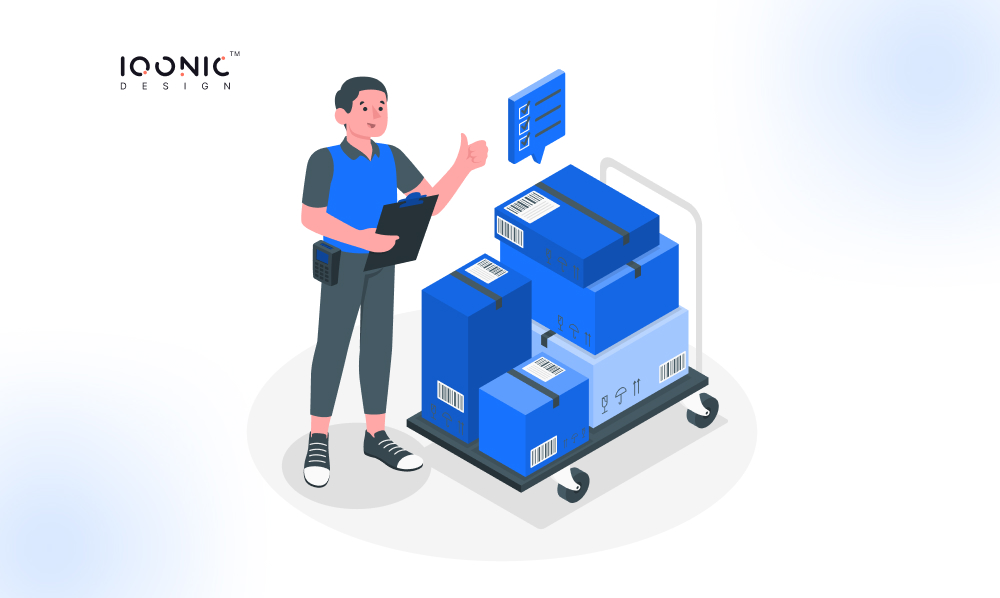
Inventory Management Software Development: Features and Trends
In the fast-paced business world, where efficiency and precision can make or break success, inventory management is a cornerstone of operations. It’s not just about tracking goods on shelves; it’s about wielding a powerful tool to optimize processes, cut costs, and elevate a business to new heights.
This blog aims to embark on a journey through the realm of inventory management software. We’ll delve into its critical role within enterprises, deciphering how it streamlines operations and contributes to cost reduction. Moreover, we’ll explore the ever-evolving landscape of this software domain, unveiling the key features and emerging trends that shape how businesses manage their inventories. So, join us as we unravel the significance of inventory management and discover the innovations reshaping the business landscape.
The Significance of Inventory Management
Inventory management isn’t merely a matter of counting goods; it’s a strategic imperative for businesses of all sizes and industries. At its core, it’s about ensuring that the right products are in the right place at the right time and quantity. Here’s why it’s pivotal:
Optimizing Operations:
Inventory management is the linchpin that optimizes day-to-day operations. It minimizes the risk of stockouts, ensuring customers can always access what they need. Simultaneously, it prevents overstocking, which ties up capital and storage space. This balance streamlines supply chains and enhances overall operational efficiency.
Cost Reduction:
Inefficient inventory management can significantly drain a company’s finances. Excess inventory ties up capital accrues storage costs, and may lead to product obsolescence. Conversely, underestimating demand results in stockouts, missed sales, and potentially tarnished customer relationships. Effective inventory management is the key to striking this delicate balance.
Challenges Without Effective Management:
Without robust inventory management, businesses grapple with inaccuracies, from miscounts to lost items. These inaccuracies cascade into disrupted production, missed sales opportunities, and dissatisfied customers. Additionally, regulatory compliance can become an issue, leading to fines and reputational damage.
Inventory management isn’t just a routine task; it’s a strategic imperative. It’s the heartbeat of supply chain efficiency and a critical driver of cost reduction, making it indispensable for any business aiming for sustainable growth and competitiveness.
Essential Features of Inventory Management Software
Inventory management software is the linchpin of efficient supply chain operations. To accomplish this feat, it boasts several essential features that underpin its success:
Real-time Tracking:
Inventory management software provides a bird’s-eye view of your inventory in real-time. This transformative feature allows you to instantly monitor stock levels, location changes, and order statuses. Gone are the days of manual checks and human error. Real-time tracking minimizes stockouts, reduces overstocking, and enhances order fulfillment accuracy.
Barcode Scanning:
Automated Reporting:
Automated reporting transforms inventory data into actionable insights effortlessly. Users can generate reports on key metrics, such as turnover rates, reorder points, and item profitability, at the push of a button. This feature empowers data-driven decision-making and ensures inventory levels align with demand.
These fundamental features work to drive accuracy and efficiency in inventory management. Real-time tracking keeps you ahead of inventory fluctuations, barcode scanning eliminates data discrepancies, and automated reporting translates data into insights for informed decision-making.
Advanced Features and Trends
While the core features lay the foundation for effective inventory management, the software landscape is continuously evolving with cutting-edge trends and advanced capabilities:
AI and Machine Learning:
AI and machine learning revolutionize inventory management. These technologies analyze historical data to predict future demand accurately. Demand forecasting becomes proactive rather than reactive. Predictive analytics also identify patterns, helping to optimize reorder points and reduce carrying costs. AI can even suggest optimal storage locations based on demand and item characteristics.
Cloud-Based Solutions:
Cloud-based inventory management is a game-changer for accessibility and scalability. It enables real-time collaboration among teams, regardless of location. Cloud solutions offer flexibility, ensuring businesses can adapt quickly to changing needs. Moreover, they eliminate the hassle of managing on-premises hardware and software updates, reducing IT overhead.
Mobile Accessibility:
The mobile revolution has extended to inventory management. Modern software often includes mobile apps that empower employees to perform tasks on the go. Warehouse workers can use smartphones or tablets to scan barcodes, update stock levels, and fulfill orders. This mobility enhances efficiency by minimizing manual paperwork and reducing errors.
Incorporating these advanced features and trends propels inventory management into the future. AI and machine learning elevate demand forecasting, cloud-based solutions offer flexibility and scalability, and mobile accessibility streamlines operations in an increasingly fast-paced business environment. By embracing these innovations, businesses can stay ahead of the competition and optimize their supply chain operations.
User-Friendly Interface
A user-friendly interface bridges complex inventory management software and its users. Its importance cannot be overstated. An intuitive design simplifies navigation and minimizes the learning curve. Employees can quickly adapt to the software, reducing training time and errors.
A well-designed UI enhances the user experience by presenting information clearly and logically. It streamlines tasks, reduces the risk of mistakes, and fosters efficiency. A user who can effortlessly find what they need is more likely to use the software effectively, leading to improved inventory accuracy and overall productivity.
Data Security and Compliance
Robust data security and compliance are non-negotiable in inventory management software. Safeguarding sensitive inventory data is paramount in a world fraught with data breaches and regulations.
Encryption guarantees the security of data when it’s being transmitted or stored. User access controls restrict unauthorized access, preventing data breaches. Compliance with industry standards and regulations, such as GDPR or HIPAA, is a legal requirement and a trust-building measure.
Customization and Scalability
Customizable inventory management software offers businesses a crucial advantage: it adapts to their unique needs. Whether a company deals with electronics, clothing, or perishables, tailor-made software ensures that it aligns with specific processes, reducing operational friction.
Scalability, on the other hand, caters to growing businesses. As operations expand, software should seamlessly grow with them. Scalable inventory solutions accommodate increased product lines, multiple locations, and higher transaction volumes. This flexibility safeguards investments, ensuring businesses won’t outgrow their software, enabling continued efficiency and adaptability.
Integration with Other Systems
Inventory management software is most potent when it collaborates seamlessly with other business systems like ERP (Enterprise Resource Planning) and CRM (Customer Relationship Management). Integration offers advantages that ripple through the organization.
By merging data from these systems, businesses gain holistic insights. For instance, an integrated CRM and inventory system can provide real-time stock availability information to sales teams, ensuring accurate order promises. Similarly, linking inventory with ERP enhances supply chain visibility, optimizing procurement and reducing costs.
Ultimately, this integration eliminates data silos, streamlines processes, and enhances decision-making, making it a must-have for businesses seeking operational excellence.
Future Outlook and Conclusion
Inventory management software remains a linchpin for operational excellence in the ever-evolving business landscape. We’ve explored its significance, essential features, advanced trends, and the importance of user-friendliness, security, scalability, and integration.
As we look ahead, the trajectory of inventory management software is clear. It will continue to harness AI, machine learning, cloud solutions, and mobile accessibility to enhance efficiency. The potential impact on businesses is profound: streamlined operations, reduced costs, and data-driven decision-making.
The future of inventory management software isn’t just about managing goods; it’s about managing success. Embracing these trends will position businesses to thrive in the dynamic world of commerce.
Introducing Iqonic Designs: Your Go-To Team for Inventory Management Software Development!
Are you seeking top-tier Inventory Management Software solutions? Your search ends here with Iqonic Designs, a leading custom app development company. We’re not merely a tech team; we’re your dedicated experts, committed to delivering exceptional results.
Who We Serve:
1. Startups:
If you’re a budding entrepreneur with a vision for efficient inventory management software, we’ll turn your ideas into reality.
2. Software Development Companies:
Partner with us to expand your capabilities in inventory management software development without breaking the bank.
3. Small and Medium Enterprises (SMEs):
We’re the reliable partner SMEs need to create high-quality software projects without disrupting their core operations.
What Sets Us Apart:
User-Friendly Design:
Our designs prioritize user-friendliness, ensuring your software is easy to navigate and use.
Software Development Excellence:
We create powerful inventory management software that not only meets your needs but also adapts to future trends.
Robust Backend Systems:
Every successful software relies on a solid backend. We specialize in crafting powerful APIs and backend systems to support your inventory management needs.
Informative Landing Pages:
Your software’s online presence matters! We create landing pages that effectively communicate your software’s features and benefits.
Hosting and Deployment:
Leave the technical details to us. We handle hosting and deployment, ensuring your software is accessible across platforms.
Ongoing Support:
Software needs updates to stay current. Count on us for reliable support and maintenance to keep your inventory management software up to date.
When it comes to Inventory Management Software Development, Iqonic Designs is your ideal partner. We’re here to guide you through the essential features and emerging trends. Let’s turn your software project into a success story, together!






